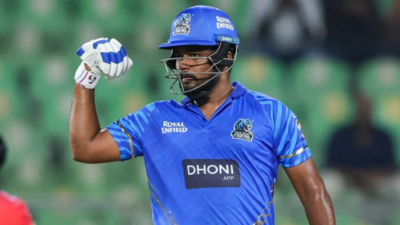Sports
The VAR Review: Examining Man United’s penalty, and Yoro’s push
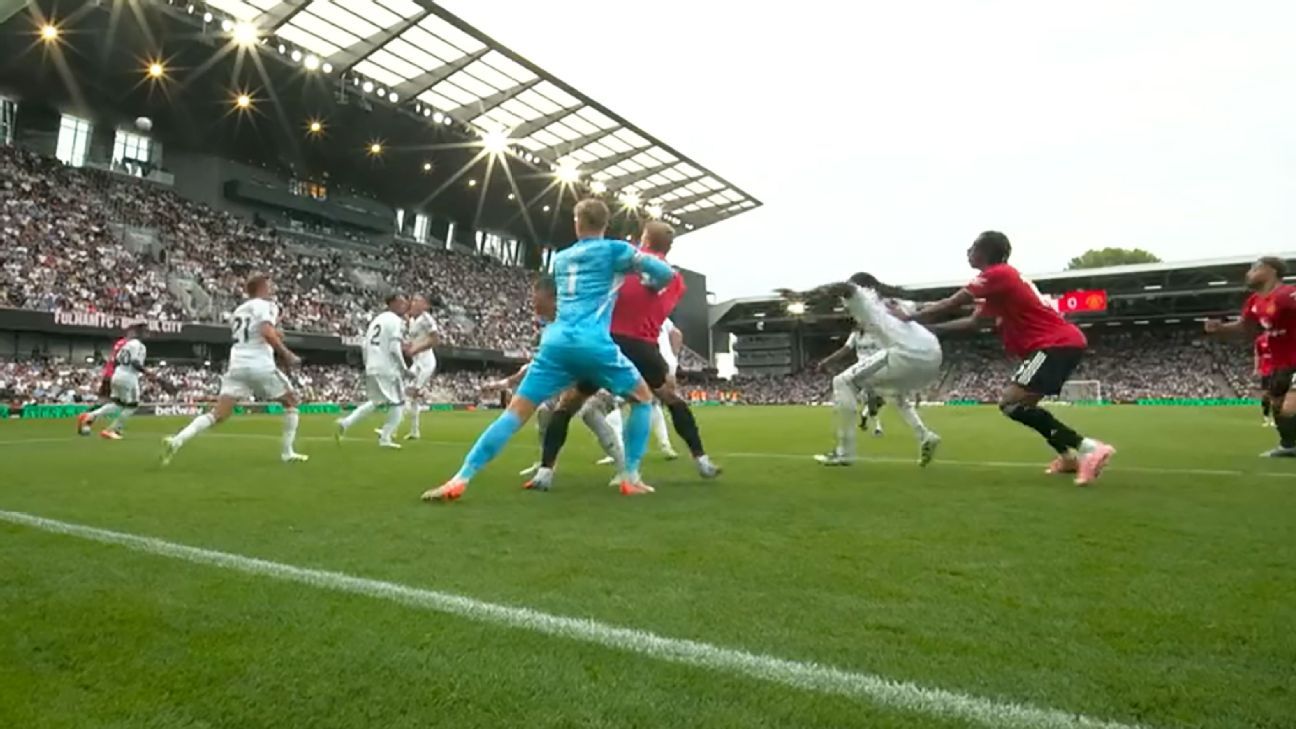
Video Assistant Referee causes controversy every week in the Premier League, but how are decisions made, and are they correct?
After each weekend we take a look at the major incidents to examine and explain the process both in terms of VAR protocol and the Laws of the Game.
In this week’s VAR Review: Looking at why Manchester United were awarded a penalty at Fulham, and also why their goal later in the match was allowed to stand. Plus, should Manchester City goalkeeper James Trafford have been sent off against Tottenham Hotspur?
Possible disallowed goal: Challenge by Yoro on Bassey
What happened: The game was in the 58th minute when Man United won another corner. Bryan Mbeumo delivered into the danger zone, with Leny Yoro‘s header deflecting into the back of the net off Fulham‘s Muniz. However, Yoro appeared to push Bassey as the ball came into the box, and that was looked at by the VAR.
VAR decision: Goal stands.
VAR review: The VAR doesn’t step in to disallow a goal for a foul very often in the Premier League — last season it happened just four times and only one of those involved this specific type of offence (Sepp van den Berg‘s effort for Brentford against Southampton ruled out for holding by Yoane Wissa on Jan Bednarek). No VAR error was logged across the season by the Key Match Incidents Panel for a foul in the buildup to a goal.
It’s easier to find examples of pushes that were not penalized — Joelinton on Gabriel Magalhães when Newcastle scored against Arsenal two years ago; or Beto on Ibrahima Konaté for Everton’s late goal vs. Liverpool in February.
Verdict: With the high bar in the Premier League, there is a reluctance to get involved in this kind of situation, with the belief that an attacking player is allowed to create space and the referee should be making the decision. However, if the VAR is getting involved in the earlier defensive infringement, it feels inconsistent that they would not intervene when Yoro’s push with both arms prevented Bassey from being able to challenge for the ball.
– Ogden: New season, same problems for Manchester United
– O’Hanlon: The best worst transfers that should have worked
– How did Arsenal beat Spurs to Eze, and why do they need him?
The VAR argued that this level of contact wasn’t impactful, but it’s difficult to see how that can be the case when the United player was left free to direct a header which led to a goal.
The Premier League’s high bar for intervention — 83% of stakeholders voted that the current level should be maintained, with only 8% feeling it should be lowered — creates a situation where such fouls are left on the field. But for many supporters, it leaves the perception of a “big club decision” from the VAR.
And of course, we have examples of very similar pushes being given as a foul on-field — such as Enzo Fernández‘s disallowed goal for Chelsea at Brighton & Hove Albion last season.
Possible penalty: Challenge by Bassey on Mount
What happened: Manchester United had a corner in the 33rd minute. As the ball came into the area, several players went to ground through grappling and holding but referee Chris Kavanagh allowed play to continue. It then became clear a VAR check was being made for a possible penalty over a foul by Calvin Bassey on Mason Mount, yet it was one minute and 45 seconds until the referee was sent to the monitor by the VAR, Darren England.
VAR decision: Penalty, missed by Bruno Fernandes.
VAR review: At the start of the season, Premier League refs chief Howard Webb made it clear that there would be a focus on holding inside the area. Not the simple contact stuff, but the clear non-footballing actions.
“What we’ve said to the officials is if you get one of those situations where one player is clearly dragging another one to the floor in an extreme non-football action, even if it’s off the ball, we expect the referee to see it,” Webb said. “Or if it’s a clear one, then the VAR will intervene and recommend the referee looks at it at the screen because it fits the criteria that we’ve laid out. An extreme non-footballing action which prevents an opponent from moving.”
Webb also made it clear that there wouldn’t be a huge spike in penalties for this, as it was about catching the excessive examples — and that’s what England felt he saw here.
Bassey does throw Mount to the ground and has no interest in playing the ball, in a similar way to the VAR penalty awarded to Newcastle United at Everton at the start of last season, when James Tarkowski dragged down Sandro Tonali.
It’s confusing, however, that the VAR showed the referee only the “high behind” camera angle; there were other angles that showed the nature of the challenge more clearly. It may well be that the VAR felt this was the best to show that the offense by Bassey came before a possible foul by Luke Shaw on Rodrigo Muniz — or that it didn’t reach the threshold for a foul. And just because there was other holding taking place inside the area doesn’t mean the VAR won’t intervene if they feel there is a more serious offense.
The “high behind” camera did make it clear that Mount was being “thrown” by Bassey, while Shaw was only holding on to Muniz. So Bassey’s actions came first and a penalty is justified.
Verdict: The issue with holding offenses is always going to be consistency, but the new guidelines have been brought in to punish the more obvious examples and not make football a non-contact sport on set pieces. There won’t be a flood of penalties for this.
However, when a VAR intervention happens, the game should go back to that point. The three minutes lost from the ball being in play to the end of the review should have been replayed, but only two minutes were added on at the end of the half.
Possible red card: Challenge by Trafford on Kudus
What happened: Mohammed Kudus ran onto a ball through the center in the 40th minute, and Manchester City goalkeeper James Trafford came out of his area. The pair collided, with Kudus going down and Trafford then able to clear. Referee Peter Bankes allowed play to continue, and it was looked at by the VAR, Andy Madley, for a possible red card.
VAR decision: No red card.
VAR review: One thing we can be sure of is that this was a foul and should have been called as such by the referee, who was perhaps fooled by the way Trafford came away in possession of the ball. The VAR can’t get involved in a simple free kick, but they can if there should have been a red card — and the chronology is important.
The first aspect to consider is denying a goal-scoring opportunity (DOGSO) by handball. A goalkeeper doesn’t have different handball factors to an outfield player, the arm still has to be extended away, in an unexpected position or there be a deliberate act. Trafford had his arm close to his body and didn’t move it, or his body, to the ball. The ball came at him from very close proximity off Kudus. This won’t be considered a handball offense and there shouldn’t be a VAR intervention.
Second, a possible red card for serious foul play. Trafford took a considerable risk in going into the challenge with Kudus with a raised knee, but he didn’t go into the challenge with excessive force or directly into the opponent, so this would not reach the bar for a red card.
Now back to DOGSO, this time for the challenge: the potential foul could stop Kudus being through to an empty goal. Does the foul come before, at the same time, or after Trafford gets a touch? This is important for DOGSO, because the direction the ball is travelling decides the quality of a scoring chance, if it exists at all.
So if there is no handball, it’s a play of the ball by Trafford, and from that point it can be deemed that there is no chance of the Tottenham Hotspur player taking control.
It’s like the possible DOGSO against Spurs goalkeeper Guglielmo Vicario vs. Brentford last season. He handled the ball outside the area, but the ball dropped behind Mikkel Damsgaard, so it couldn’t be considered a DOGSO situation.
Verdict: DOGSO is very often about the perception of where it happens on the pitch, when it’s really the ball that is the key factor, along with the position of opponents.
Take Andrew Robertson‘s DOGSO red card for Liverpool vs. Fulham last season. There were clear questions about any kind of scoring chance for Harry Wilson, but as the foul happened just outside the area as the “last man,” there was very little controversy.
A situation like with Trafford, and Vicario, can look and feel like it should be a DOGSO red card, but there could be one crucial element missing, which means the VAR won’t get involved.
There’s just about enough doubt in the chronology of the incident for Trafford to avoid a red card through VAR, but it wouldn’t have been overturned if given by the referee. That said, most fans will believe this looks like a DOGSO red card.
Possible penalty: Challenge by Van de Ven on Bobb
What happened: Tottenham goalkeeper Vicario played a short pass to Micky van de Ven inside his area in the 52nd minute, but the defender miscontrolled the ball, allowing Oscar Bobb to steal it. It ran to Erling Haaland, who attempted to find Rayan Cherki. However, he was penalized for a foul on João Palhinha. Bobb was on the ground asking for a foul, but it wasn’t spotted by the referee.
VAR decision: No penalty.
VAR review: With the on-field decision carrying all the weight with VAR, there will often be similar decisions across a weekend with opposite outcomes, and often it’s the more obvious foul that isn’t punished.
The ball has gone when Van de Ven stands on the foot of Bobb, and we’ve seen other instances when the VAR has intervened, such as when Chelsea midfielder Fernández was penalized for stepping on Manchester United‘s Antony.
Yet later on Saturday, Arsenal were given a penalty when Leeds United‘s Anton Stach trod on Max Dowman; the contact in that case appeared to be far less significant (watch here).
Verdict: In both the Arsenal and Man City cases, the on-field decision was upheld, which was understandable with Stach’s challenge. The high threshold will always give the perception of inconsistency.
Van den Ven makes contact on the top of Bobb’s foot after the ball has gone, and this should have been a penalty.
Possible handball: Saliba on Timber goal
What happened: Arsenal scored their fourth goal in the 56th minute, when Jurriën Timber netted from close range following a corner routine. But was there a case of handball against William Saliba before the ball dropped to Timber?
VAR decision: Goal stands.
VAR review: Accidental handball is only an automatic offense if it’s by the goal scorer. As Timber scored, Saliba’s act either had to be deliberate or his arm needed to be in a position that wasn’t justifiable for his movement.
Verdict: It wasn’t clear whether the ball did indeed touch Saliba’s left arm, but there wasn’t anything that could be penalized for handball if it did.
Possible goal: Foul by Collins on Martínez
What happened: Brentford thought they had scored a second goal in the 43rd minute when Mikkel Damsgaard lashed home a loose ball after a long throw. Referee Tony Harrington disallowed it for a foul by Nathan Collins on goalkeeper Emiliano Martínez. Should there have been an intervention by the VAR, Tim Wood?
VAR decision: No goal.
VAR review: We’re back to the weight of the on-field decision, this time comparing to last week’s goal for Arsenal at Manchester United and Saliba’s challenge on Altay Bayindir.
The actions of Collins and Saliba were very similar, but one goal was disallowed and the other was given — both decisions taken by the referee.
Verdict: The VAR will stand by the on-field call because Collins seemed to be moving into Martínez, but it’s exceptionally soft, and in a case like this, where the fault really does lie with the goalkeeper, an intervention would be a better outcome.
Last season, the KMI Panel didn’t log a VAR error for a challenge on a goalkeeper, but it did say the on-field referee was wrong to rule out a goal by Newcastle United‘s Bruno Guimarães after he had put pressure on Ipswich Town goalkeeper Alex Palmer. It seems like the panel might come to a similar judgement on this.
Possible penalty overturn: Handball by Dewsbury-Hall
What happened: Brighton & Hove Albion were awarded a penalty in the 76th minute when Kiernan Dewsbury-Hall blocked a shot by Yankuba Minteh with his hand. Referee Stuart Attwell pointed to the spot and it was checked by the VAR, James Bell (watch here).
VAR decision: Penalty stands, Danny Welbeck‘s effort saved by Jordan Pickford.
VAR review: Everton were furious on Monday when they conceded a handball penalty at Leeds United — but there was no chance that was going to be overturned. James Tarkowski had leaned his body into the path of a shot and stopped it with his arm. In law, that the arm was close to the body was irrelevant as the player’s body movement qualifies as a deliberate act (watch here).
The Dewsbury-Hall decision was slightly more contentious, but he moved his arm into a raised position as Minteh takes his shot, and that makes it very difficult for the VAR to get involved.
Verdict: We’ve already had three handball penalties this season, all given by the on-field referee. That has already beaten the total for 2024-25, when two were whistled on the pitch (plus seven through VAR).
Handball will always be contentious, especially those given, but the KMI Panel won’t judge either of these to be incorrect.
Possible red card: Violent conduct by Adringra
What happened: Simon Adingra was shown a yellow card in the 19th minute after he raised his hand to the face of Hannibal Mejbri. Referee Michael Salisbury showed only a yellow card to the Sunderland player, but was there a case for a red card? It was checked by the VAR, John Brooks.
VAR decision: No red card.
VAR review: There’s a misconception that raising an arm to the face is automatically a red card, but it’s not that straightforward.
The law on violent conduct states that “a player who, when not challenging for the ball, deliberately strikes an opponent or any other person on the head or face with the hand or arm, is guilty of violent conduct unless the force used was negligible.”
And it’s the last six words that saved Adringra.
Verdict: Referees are asked to consider if a player’s actions are petulant or violent for the incident to cross from a yellow card to a red, and a caution is justifiable in this case. There was no force in the way Adringra put his hand to the face of Mejbri.
Sports
Sanju Samson ahead of Asia Cup: Three consecutive consecutive consecutives in Kerala Cricket League | Cricket news
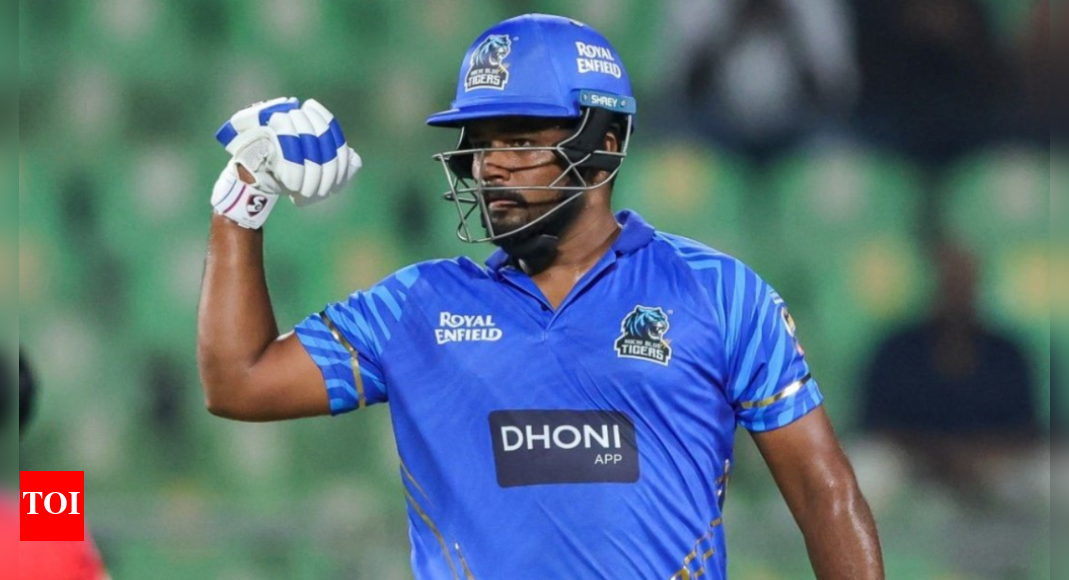
Sanju Samson Kerala has been invincible in the Cricket League, producing another explosive innings on Thursday to mark his consecutive fifty in the tournament. The 30 -year -old fell to 62 out of 37 balls, but this was another performance of his attacker skills and adaptability. In the third match of the tournament, Samson’s remarkable run began with 121, where he reached his fifty in just 16 balls and completed his century in 42. In the fourth match, he followed it with 89 from 46 balls. Now, in the sixth match, his 62-run knock further outlined why he is one of the most in-form batsmen in domestic cricket. The change in his batting position seems to have worked. Earlier in the tournament, Samson batted at number 6, but opening the innings allowed him to showcase his natural attacker game and adapt to various situations. Fans and cricket experts are now curious to see that he can bat in the upcoming India. Asia Cup The campaign, which begins on 9 September.
Voting
Sanju Samson should play the batting position in the Asia Cup?
Former captain of india Ajinkya Rahane His support for the inclusion of Samson in the squad has voiced. “Shubman’s team is back, I am sure he is most likely to open Abhishek SharmaPersonally, I would like to see Sanju Samson in the team because he really did well. He is a very confident boy, a very good team man, and it is very important, ”Rahane said on his YouTube channel. However, former India batsman Akash Chopra believes that Samson may remember the team’s balance. “with Shubman GillThe return of Sanju Samson has been more or less sealed. He will no longer facilitate playing XI. You will not leave Tilak Verma or Hardik Pandya, which means that Samson sits outside and Jitesh Sharma Chopra said that it would probably get the node again. Despite different opinions, Samson’s frequent demonstrations in KCL have ruled India’s debate on India’s playing for the Asia Cup. Their ability to score quickly and to be compatible with various positions makes them a valuable property, and fans are closely looking at whether they will get a chance on the international stage once again.
Sports
Asia Cup Hockey: Fulton Bank familiar faces and experience to qualify for India World Cup
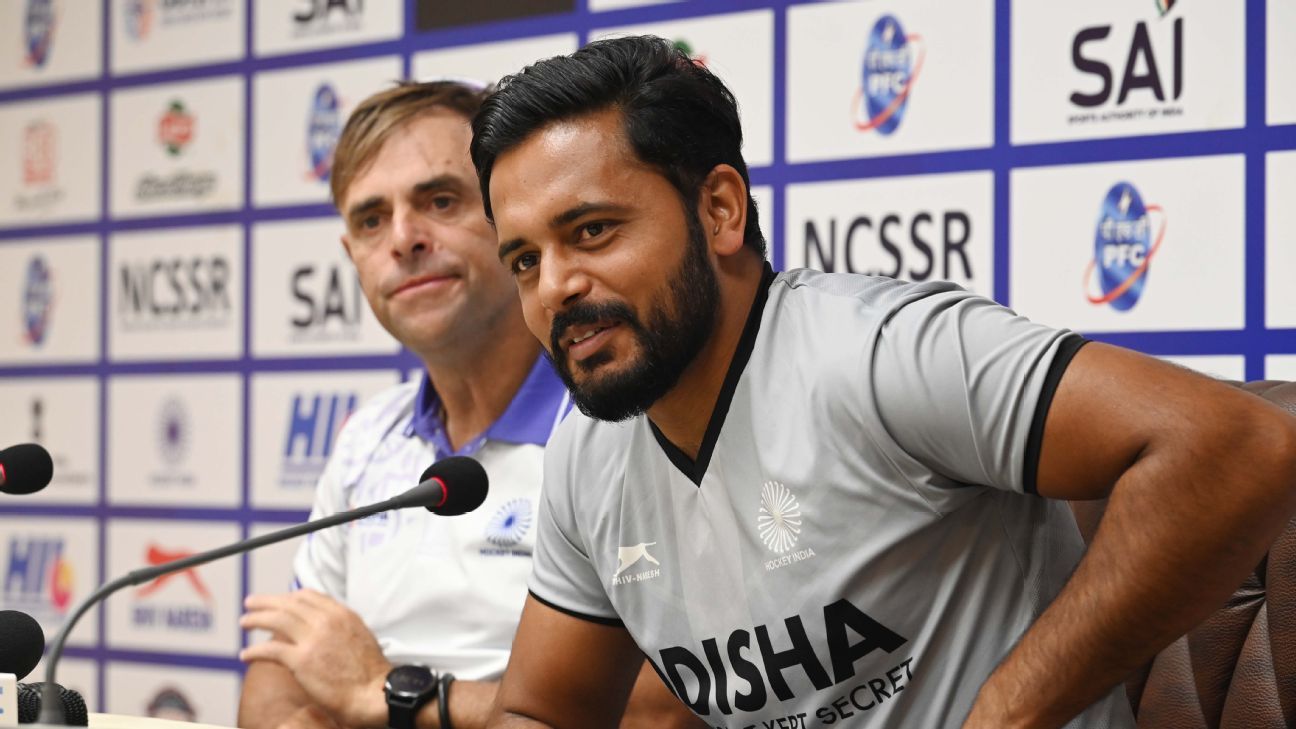
The Indian men’s hockey team Rajgir, Bihar, is back in action after a gap of two months for all important Asia Cups, which begins on 29 August.
Harmanpreet Singh and Sah. After finishing a very difficult campaign in the FIH Pro League, especially in the European leg, where he lost seven of the eight matches and finished second from below.
Since then, head coach Craig Fulton and his team were involved in a deep two -week camp based on their home in Bangalore before going to Australia to play some games to prepare for the Asia Cup.
Teams and format
Eight teams are playing in the tournament.
Pool A: India, China, Japan and Kazakhstan.
Pool B: Bangladesh, Chinese Taipei, Malaysia and South Korea.
Each team will play their pool opponents once and qualify for the top two super 4s from both pools.
Super 4s will once again have a round robin format and the top two will take it in the final and play two third and fourth positions below.
India’s Program:
August 29: India vs China at 3 pm.
August 31: Japan vs India at 3 pm.
1 September: India vs Kazakhstan at 7:30 pm.
The Super 4S starts from 3 September. The final and third and fourth place match is scheduled for 7 September.
What happened to Pakistan?
Pakistan refused to travel to India for the tournament, and was replaced by Bangladesh. Oman is another country that did not make it India and was replaced by Kazakhstan.
The teams who recall their opportunity to make it in the World Cup through the continental tournament, next year the qualifications including 16 teams will be part of the tournament. Each tournament will feature eight teams and the top three and highest ranked team from each, which ends in fourth place from each event, which will make it in the World Cup.
India’s squad for Asia Cup
Goalkeeper: Krishna B. Pathak, Suraj Karekera.
Guards: Sumit, Jarmanpreet Singh, Sanjay, Harmanpreet Singh, Amit Rohidas, Jugraj Singh.
Midfielder: Rajinder Singh, Raj Kumar Pal, Hardik Singh, Manpreet Singh, Vivek Sagar Prasad.
Ahead: Mandeep Singh, Shilanand Laxma, Abhishek, Sukhjit Singh, Dilpreet Singh.
Alternative athlete: Neelam Sanjip Xess, Selvam Karthi.
Big picture
Despite a disappointing outing for most players in the Pro League, Fulton has chosen an attempt and reliable squad for the Asia Cup. Senior players like Mandeep Singh, Dilpreet Singh, Krishna Pathak and Amit Rohidas had some question marks, which were not in their best performance in the last big matches, but Fulton is not ready to make big changes. This makes sense because it is an important tournament with World Cup qualification on the line.
There is no denying that senior players need to be improved. Forward Mandip and Dilpreet have to step into pressure conditions and count their possibility. Sukhjit Singh and Shilanand Laxma had their moments, but stability is an issue. Only Abhishek D has been a reliable threat and is a consistent scorer of field balls.
“We are not so good in proficiency in the case of counter-harael. We win and go, but do not get lots of results. We are trying to improve his strategic side. Therefore, it is also personnel, it is also a combination, it is also technical, but mainly it is technical, but mainly it is to make decisions. We want to take better decisions”
“As long as you are looking at more than two options, as you eventually you need three, you make the best decisions.”
The decision making aspect was an issue in the Pro League where more often, the players saw the ball before the ideas. This is related to this because players have a lot of international experiences in the same set and most of them were involved in the Paris Olympic bronze medalist campaign.
It is understandable that taking a decision is a problem in a young squad that has less experience of playing big matches, but this is not the case with this Indian team. So far, the Flton is not ready to make changes in the context of the personnel, which means that he is not giving to his senior players and hoping that the issue will be corrected in the Asia Cup.
Another issue was the form of goalkeepers, especially Krishna Pathak. He was expected to act as a senior goalkeeper post, which is with the retirement of PR Sreejesh, but has been struggling with his form since the beginning of the year. Fulton blamed himself as he cited ‘lack of goalkeeping coaching’ on his behalf and said that he had worked hard to improve the training camp.
Teams in the Asia Cup are not in the same class of European or Australia, but they can cause serious damage. The next best teams after India are Malaysia and South Korea and both are out of the top ten. India is much better in all departments, but the important thing to keep in mind is that only one winner can make it in the World Cup. In large pressure games, the sides are also excluded most often. India has performed well in the knockout tournament like the Asian Games and Olympic Games, and they will watch to do the same in Rajgir. If they fail, there will be another chance for the World Cup, but it will cause great damage to the players’ morale, and the pressure on Fulton will increase.
Sports
The French transgender chess player, who faced online misuse, wins the national title; Makes history. Chess news
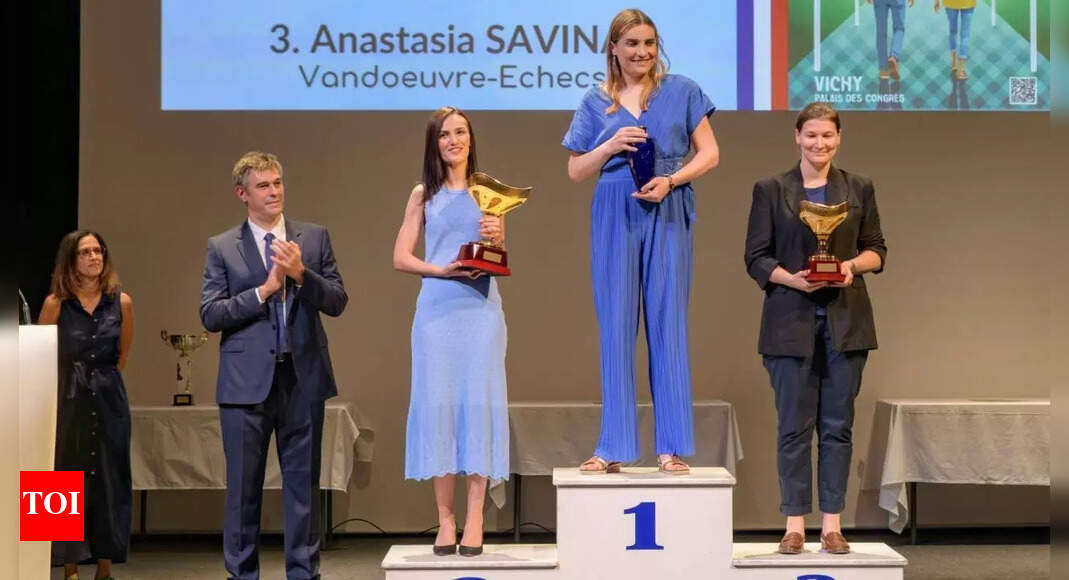
37 -year -old Yosha Iglessius has become the French woman chess champion, which makes history as the second transgender player to win the National Chess title. Iglessius, who finished seventh at the 16-Khiladi knockout event in Vichi, France, won the final match by defeating women’s grand master Mitra Hedgezipore 1.5–0.5.5.Iglesias made progress through the tournament by defeating WGM Maria Nepina-Lacate 3.5-2.5, IM Polyn Guicard 1.5–0.5, and Im Anastasia Savina 1.5–0.5 in the semi-finals. During the quarter-finals against Guicard, Iglessius played what she considers the best game of her career.“Nothing makes me happy than knowing my title, it can show young Trans people not to choose between chess and infection. I do not want them to suffer like I had done during many years, I felt that I would have to reject my trans identity to continue playing the game I love. ,Iglessius follows the animery meer, who won the German Women’s Chess Championship in 2003, which was the second transgender athlete to win the National Chess title. Meer, who no longer play actively, shared his support for Iglessius.“It is a worldwide signal for our generalization, for our generalization, a worldwide signal for the visibility and acceptance of our trans women, a empowerment that reduces our doubts about our right to existence. I want the public dialogue about trans women in chess and in sports without any fear, and especially without hatred, with respect from all sides.”
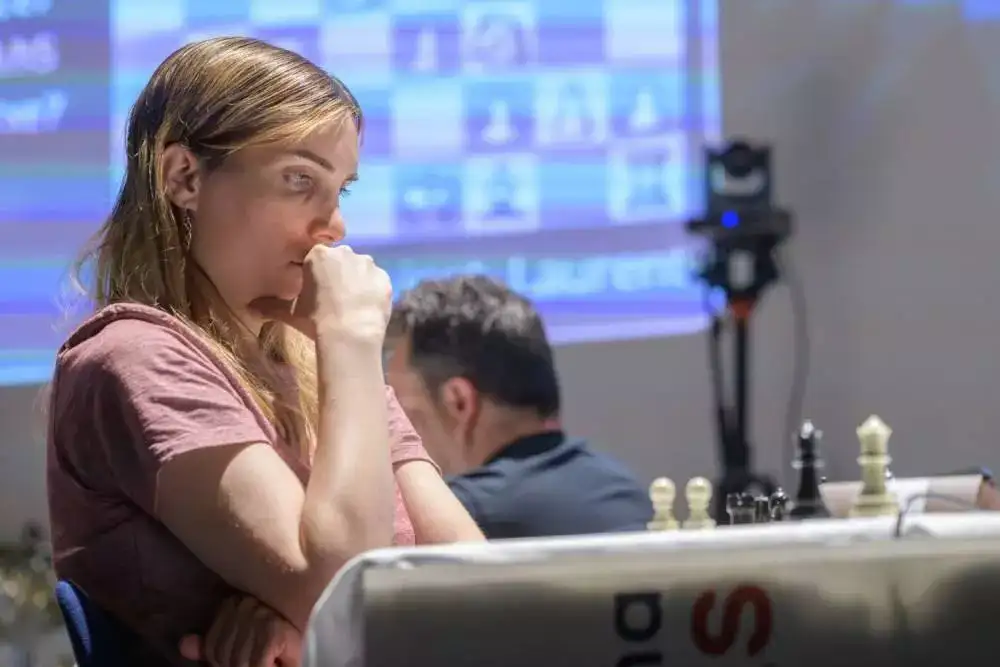
Yosha Iglesius during the French National Chess Competition. (Image: French Chess Federation/Chess.com)
Since its infection in 2021, Iglessius has advocated for women and trans rights within the chess community. She faced a dispute in 2023 when FID imposed a policy of banning only transgenders from official women to pending further analysis from official women.Iglessius has faced online harassment after its success. He addressed this challenge through social media, thanked his oppressors for helping to create his mental strength.“At the beginning of my infection, I knew that I would be very hated. I decided to give it a chance to grow as a person and also as a player in adverse conditions.”The championship final was concluded with a meaningful moment between the final Iglesius and his rival Hedgipore.“When Mitra resigned in the final game, I quit some tears, while Mitra congratulated me. Shortly after, she hugged me with a big smile. It shows how much he is of the best, but also that we share a deep spirit.”After recovering from the upcoming surgery in October, Iglessius plans to pursue the WGM title. She aims to represent France in the Olympic Games or the European Team Championship.“At the age of 37, I will reach my peak rating in the upcoming list. It shows that life is only half-life before the infection, and that the transition enables you to really bloom. I will try to make it for all those years, when I finally accept that I already accept.”
-

 IPL3 months ago
IPL3 months ago‘Any nahhi numba hai’: Furious MS Dhoni loses cool, CSK shouts at players – Watch. Cricket news
-

 Sports3 months ago
Sports3 months ago‘Is MS Dhoni fit or not?’ Cricket news
-

 IPL3 months ago
IPL3 months agoExplained: Why Punjab Kings will get two opportunities to reach IPL 2025 final
-

 National News3 months ago
National News3 months agoIndian Youth Congress started fellowship program for young lawyers
-

 IPL3 months ago
IPL3 months agoIPL 2025: Hardik Pandya hit the unique ‘Triple Century’ in T20S.
-

 IPL3 months ago
IPL3 months ago‘No, you can’t take it …’: Shreyas Iyer’s bold statement. Cricket news
-

 Sports3 months ago
Sports3 months agoHow Rohit Sharma’s bad form with BAT is damaging Mumbai Indians’ IPL 2025 campaign
-

 IPL3 months ago
IPL3 months agoAnil Kumbal on Shubman Gill: ‘Captaining India is different from the captaincy of a franchise’. Cricket news

